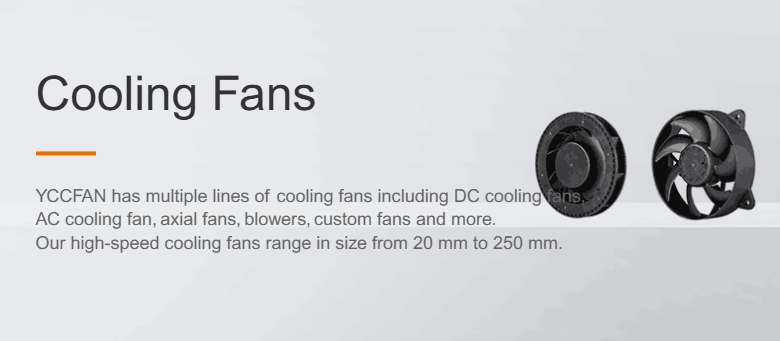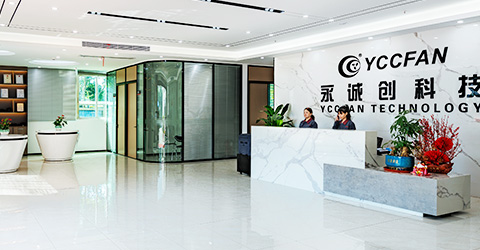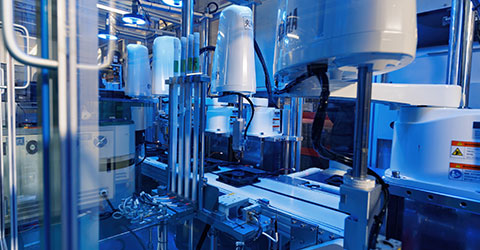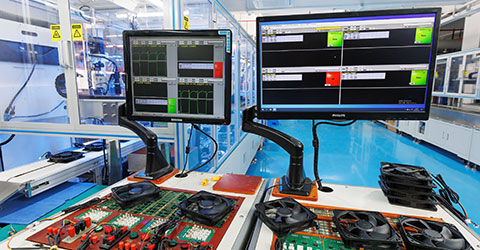How to Choose the Right Cooling Fan for Your Electronic Devices
Introduction
Electronic devices generate heat during operation, and without proper cooling, they can overheat, leading to reduced performance, hardware failure, and a shorter lifespan. A high-quality cooling fan prevents these issues by improving airflow and maintaining an optimal temperature.
But how do you choose the right cooling fan for your PC, laptop, gaming system, industrial equipment, or home appliance? This guide covers everything you need to know to select the best cooling fan for your needs.
Why a Cooling Fan is Important
A cooling fan serves multiple purposes, such as:
Preventing overheating – Avoids damage to internal components
Improving performance – Keeps CPUs, GPUs, and power supplies efficient
Extending device lifespan – Reduces thermal stress on hardware
Minimizing noise levels – Optimized airflow leads to quieter operation
Now, let’s explore the factors that determine the best cooling fan for your electronic devices.
1. Identify the Type of Cooling Fan You Need
There are different types of cooling fans, each designed for specific applications:
Axial Fans (Best for General Cooling)
✔ Common in PC cases, power supplies, and appliances
✔ Moves air in a straight direction
✔ Available in multiple sizes: 80mm, 92mm, 120mm, 140mm
Blower Fans (Best for Targeted Airflow)
✔ Used in laptops, gaming consoles, and projectors
✔ Directs high-pressure air through a narrow outlet
✔ Ideal for small, enclosed spaces
Radiator Fans (Best for Liquid Cooling)
✔ Designed for water-cooled PC radiators and industrial machinery
✔ Higher static pressure for pushing air through dense fins
✔ Improves cooling efficiency in high-performance setups
Industrial Fans (Best for Heavy-Duty Cooling)
✔ Found in factories, warehouses, and large machines
✔ High airflow capacity for continuous operation
✔ Built for extreme environments
Mini Fans (Best for Compact Electronics)
✔ Used in routers, VR headsets, and handheld devices
✔ Small size for tight spaces
✔ Helps with air circulation in compact compartments

2. Key Specifications to Consider
When choosing a cooling fan, you must check its performance metrics:
Fan Size & Compatibility
· Measure the available space in your device
· Common PC fan sizes: 80mm, 92mm, 120mm, 140mm
· Smaller fans for laptops and compact electronics
Airflow Capacity (CFM – Cubic Feet per Minute)
· Determines how much air the fan moves
· Higher CFM = better cooling for gaming PCs & industrial machines
Static Pressure (mmH₂O)
· Essential for pushing air through radiators, heatsinks, and filters
· Blower fans have higher static pressure than axial fans
Noise Level (dBA)
· Lower dBA = quieter operation
· Silent cooling fans available for noise-sensitive environments
Power Requirements (DC vs. AC Fans)
· PC and laptops use DC fans (5V, 12V, 24V)
· Industrial and home appliances use AC fans (110V, 220V)
3. Choosing the Right Fan Bearings
The type of bearing affects fan durability, noise level, and longevity:
Sleeve Bearings
✔ Budget-friendly but wears out faster
✔ Suitable for occasional use
Ball Bearings
✔ Durable and ideal for continuous use
✔ Used in high-performance gaming PCs and industrial fans
Fluid Dynamic Bearings (FDB)
✔ Quieter operation with longer lifespan
✔ Best for high-end cooling solutions
For long-term reliability, choose ball bearing or FDB fans.
4. Fan Speed Control: Optimize Performance & Noise
To balance cooling and noise levels, consider fans with adjustable speed settings:
PWM (Pulse Width Modulation) Fans – Auto-adjust speed based on temperature
Manual Fan Controllers – Set speeds manually for custom cooling
Smart Temperature Sensors – Adjust fan speed automatically
For PC cooling, a motherboard with PWM support can regulate fan speeds dynamically for better performance.
5. Extra Features for Better Cooling
If you want enhanced cooling performance or aesthetics, consider:
RGB Lighting – Adds customizable effects for gaming setups
Dust Filters – Prevents dirt buildup, improving efficiency
Anti-Vibration Mounts – Reduces noise and fan movement
Water & Heat Resistance – For industrial and outdoor applications
6. Budget vs. Performance: Finding the Right Balance
Budget ($10 - $20) → Basic axial fans for standard cooling
Mid-range ($20 - $50) → High-CFM fans, PWM-controlled options
Premium ($50+) → Smart fans, industrial-grade cooling solutions
Investing in a high-quality fan can save you money in the long run by preventing overheating-related damage.
Final Thoughts: Choosing the Best Cooling Fan
To select the right cooling fan, consider your device type, airflow needs, noise tolerance, and power requirements.
Quick Fan Selection Guide:
For Gaming PCs & Workstations | High-CFM axial fans with PWM control |
For Laptops & Small Electronics | Compact blower or mini fans |
For Industrial & Factory Use | High-power centrifugal or industrial fans |
For Liquid Cooling Systems | High-static pressure radiator fans |
A well-chosen cooling fan enhances performance, prevents overheating, and extends device lifespan.
Need Help Choosing the Best Cooling Fan?
Still unsure which cooling fan is right for your needs? Drop a comment by the way, and we’ll help you find the perfect match!









